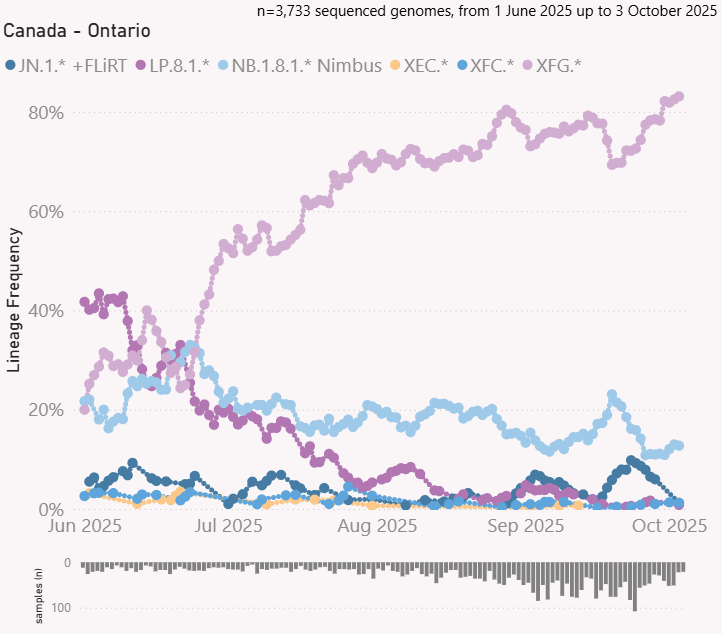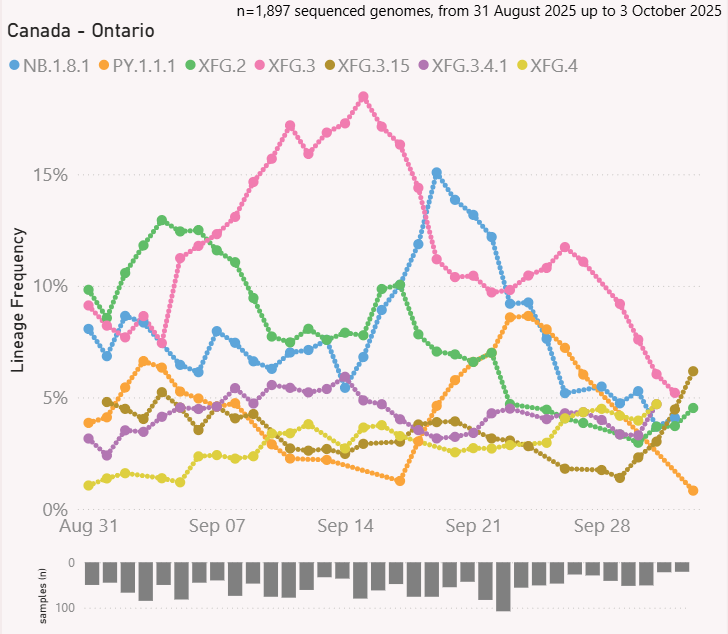Toilets, wastewater COVID-19, RSV, and Influenza all increasing
This thread will be wastewater related, looking at new variants, levels, and what happens in the air after you flush that wastewater down the toilet with some cool video/graphics. 🧵1/
This thread will be wastewater related, looking at new variants, levels, and what happens in the air after you flush that wastewater down the toilet with some cool video/graphics. 🧵1/

The wastewater levels in Ottawa, Canada are increasing for all measures ( ). RSV and Influenza A levels continue to increase which means even more pressure will be put on the hospitals that are already overwhelmed. 2/ covid.gilchrist.ca/Ottawa.html


To make matters worse, COVID-19 levels have started increasing again. You can see in the graph that levels never actually returned to low levels but are on the rise again ( ). 3/ covid.gilchrist.ca/Ottawa.html


What might be making the difference now? New Omicron BQ based variants have rapidly been increasing in Ontario and as of 10 days ago already made up more than 40% of sequenced cases ( ). Graphs by @Mike_Honey_ 4/ app.powerbi.com/view?r=eyJrIjo…


The BQ.1 Typhon and BQ.1.1 Cerberus variants specifically have overtaken all the other circulating variants in Ontario and are much more immune evasive than previous variants. 5/ 

If wastewater levels are going up again it could be because more people are susceptible to this newer variant and is being more easily transmitted amongst people, even those that have been previously infected. 6/
Speaking of wastewater, a very cool study used lasers to actually see and measure the aerosol plumes that come out of toilets when you flush ( ). H/T: @yaneerbaryam 7/ nature.com/articles/s4159…


Aerosols can transmit infectious diseases including COVID-19, influenza and likely most respiratory viruses and even Strep bacteria has airborne spread ( ). H/T: @ELHopkins 8/thelancet.com/journals/lanmi…
When you flush a toilet, it releases plumes of tiny water aerosols into the air around you which can spread pathogens from human waste and expose people in public washrooms to contagious disease ( ). 9/ theconversation.com/toilets-spew-i…


A typical commercial toilet generates a strong upward jet of air with velocities exceeding 2m/sec rapidly carrying particles up to 1.5m (5 feet) above the bowl within 8 seconds of the start of the flush which you can see in this video ( ). 10/
Toilet bowl water contaminated by feces can have pathogen concentrations that persist after dozens of flushes but it is still an open question as to how much of a transmission risk toilet aerosol plumes present. 11/
Particle size matters, the smaller aerosols can stay floating in the air for sometimes hours. Particles smaller than 5 microns can be breathed directly into your lower respiratory tract and those 6-12 microns can deposit in the upper airways ( ). 12/thelancet.com/journals/lanre…
The study measured a massive increase in particles smaller than 2.5 microns with most particles being less than 1 micron. 13/
Over the bowl (Loc 1 and 2 in diagram) particle counts increased more than 10x pre-flush rates and decreased afterwards, while 1.5m away from the bowl the particle count increase was lower but remained constant after flushing ( ). 14/ nature.com/articles/s4159…


While the visible aerosols in the video (5-10 microns) scatter more light from the lasers, they also captured the dimmer light scattered by smaller aerosols which found they move within the same envelope as the larger ones ( ). 15/ nature.com/articles/s4159…


Most interesting is they show large droplets follow ballistic trajectories, remain outside the aerosol plume envelope and drop quickly. Yet another blow to droplet theory being a significant contributor to transmission <darn laws of physics>. 16/
Closing the lid before flushing helps but does not completely eliminate plumes as there are still large gaps of space between the lid and the bowl when closed and many commercial toilets do not have lids at all. 17/
The researchers suggest that UV disinfection systems and better ventilation could help mitigate exposure to aerosol plumes in the bathroom. The next time you visit a public washroom, think of all the aerosolized human waste you are breathing in if you aren't wearing a mask... 18/
A lot of people have been saying to close the toilet lid first which doesn't stop the aerosols coming out and contaminates the underside of the lid that people touch as pointed out by this comment ( ). 19/
https://twitter.com/BarryHunt008/status/1602002915870539777
As @rnaguru points out, each pathogen is different, and so far studies haven't found much infectious COVID-19 particles in urine or feces so while the risk is not zero it may be very low. This may not be the case for other viruses/pathogens though ( ). 20/
https://twitter.com/rnaguru/status/1601702556681797632
But you will still want to wear your mask in public bathrooms to at least protect yourself from respiratory aerosols from the other people using the bathroom who may be infected (COVID, RSV, Influenza, etc...). 21/
It is not just breathing in aerosols released from flushing toilets that people need to worry about, but bacteria that gets deposited on your hands from hot-air hand dryers ( ). 22/ cnbc.com/2022/12/19/how…


A study before the pandemic found that test plates exposed to bathroom air for 2 minutes with hand dryers off averaged < 1 bacteria colony while plates exposed to hand dryer air for 30 seconds averaged 18-60 colonies ( ). 23/journals.asm.org/doi/10.1128/AE…
When researchers swabbed the interior hand dryer nozzle, they found surfaces had minimal bacterial levels so they added HEPA filters to the hand dryers which reduced bacterial deposition by 4x. 24/
This implies the bacteria was coming from the bathroom air so just after washing your hands you get pathogens deposited on them right after again. 25/
Health experts recommended using paper towels to dry their hands instead and remind everyone that acquiring infection from direct contact with other people is much more likely than from drying your hands. 26/
This study found during contact tracing that someone got infected after using a shared bathroom 40 minutes after the index case left. A good example of it isn't just the people currently there in a public bathroom you need to worry about ( … ). 27/icjournal.org/DOIx.php?id=10…
• • •
Missing some Tweet in this thread? You can try to
force a refresh

















